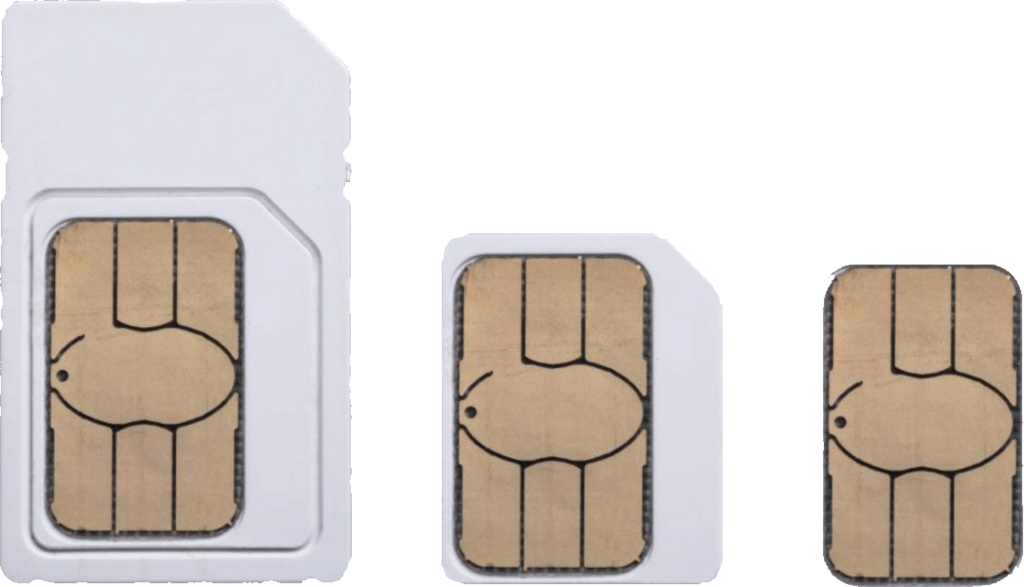Table of contents
Everyone knows the SIM card, which comes in different sizes (Mini, Micro, Nano). The e-SIM (Embedded SIM) is not a physical SIM, but a logical SIM built into the cell phone using a chip (Subscriber identity module).

The telephone number of the respective provider is stored on the SIM card. The cell phone in which it is inserted will therefore respond to a call from this number.
The e-SIM is an integrated circuit in newer cell phones that stores the relevant data via a VPN connection to the respective provider from which an e-SIM phone number was purchased and also responds to calls in the future.
While you previously needed a cell phone with two SIM cards to have two phone numbers available in one cell phone, e-SIM now makes this possible in an elegant way.
e-SIM compatible devices
Which cell phones, SmartWatches, tablets or laptops support e-SIM?
- All devices with iOS from V.12.1
- All devices with Android from V.9.0 (possibly also from 7.0)
- Google Pixel 2/XL (2017), Pixel 3/XL
- Lenovo Yoga C630, HP Specter Folio X360, Microsoft Surface
e-SIM provider
There is now hardly a provider that does not have e-SIM in their program. However, as always with contracts, special attention must be paid to the small print: not every provider, especially the cheaper ones, allows telephony and SMS services.
e-SIM often uses data roaming, which can result in slow connections and poor communication quality. If you want to avoid disappointment, it is advisable to ask friends who have similar location and usage behavior about their experiences with their provider.
The deployment abroad and the associated costs should also be compared with local providers.
Activate e-SIM
The immediately available e-SIM is usually configured using a scanned QR code, which you receive from the respective provider after the online contract has been concluded, and is immediately ready for use - without explicit activation.